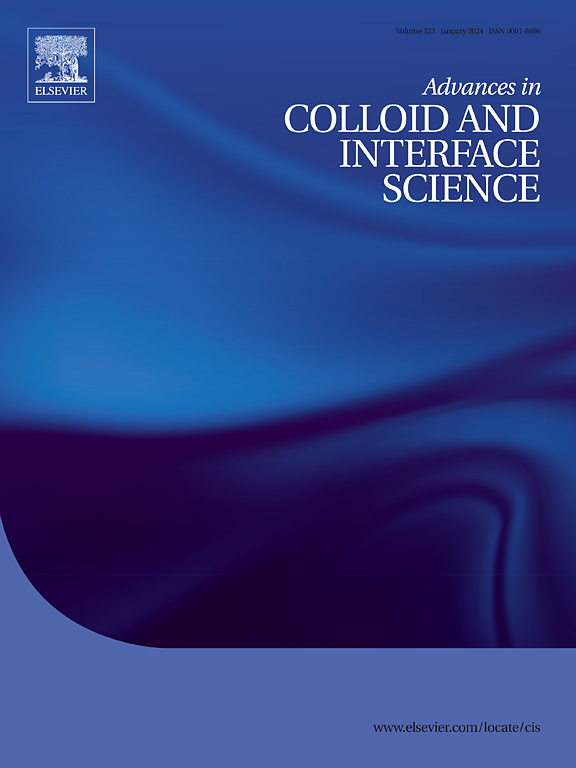A narrative review on potential applications of spanlastics for nose-to-brain delivery of therapeutically active agents
IF 15.9
1区 化学
Q1 CHEMISTRY, PHYSICAL
引用次数: 0
Abstract
Spanlastics, which are commonly referred to as elastic niosomes, presents a modified advancement in the area of colloidal system based drug delivery carriers. They are different from niosomes, which are non-ionic surfactant vesicles in having an edge activator. Initially, they were described as ocular drug delivery systems in 2011 by Kakkar and Kaur. Spanlastics have discovered a wide range of applications via different routes of administration. The purpose of this article is to provide information about spanlastics, a newly developed drug delivery system for the management of diseases pertaining to the Central Nervous System (CNS) via intranasal route. The article begins with the details on spanlastics and their composition, their benefits over traditional niosomes, and the mechanism underlying their enhanced absorption. Their applications through various routes of administration in a variety of diseases for a variety of drugs have been discussed. Furthermore, the article explains the nose to brain delivery channels and the advantages that this route offers over conventional delivery routes. Finally, the article discusses the studies encompassing the drug candidates that have been formulated as intranasal spanlastics for the management of different diseased conditions along with the future prospects of this emerging drug delivery system.

关于鼻腔整形在从鼻腔到大脑输送治疗活性药物方面的潜在应用的叙述性综述。
Spanlastics通常被称为弹性niosomes,是基于胶体系统的给药载体领域的一个改进进展。它们与具有边缘激活剂的非离子表面活性剂囊泡--niosomes 不同。最初,Kakkar 和 Kaur 于 2011 年将其描述为眼部给药系统。通过不同的给药途径,Spanlastics 发现了广泛的应用领域。本文旨在介绍一种新开发的通过鼻内途径治疗中枢神经系统(CNS)相关疾病的给药系统--spanlastics。文章首先详细介绍了spanlastics及其组成、与传统的niosomes相比的优势以及促进吸收的机制。文章还讨论了它们通过各种给药途径在多种疾病和多种药物中的应用。此外,文章还解释了从鼻腔到大脑的给药途径以及这种途径与传统给药途径相比所具有的优势。最后,文章还讨论了有关候选药物的研究,这些候选药物已被配制成鼻内注射剂,用于治疗不同的疾病,同时还讨论了这一新兴给药系统的未来前景。
本文章由计算机程序翻译,如有差异,请以英文原文为准。
求助全文
约1分钟内获得全文
求助全文
来源期刊
CiteScore
28.50
自引率
2.60%
发文量
175
审稿时长
31 days
期刊介绍:
"Advances in Colloid and Interface Science" is an international journal that focuses on experimental and theoretical developments in interfacial and colloidal phenomena. The journal covers a wide range of disciplines including biology, chemistry, physics, and technology.
The journal accepts review articles on any topic within the scope of colloid and interface science. These articles should provide an in-depth analysis of the subject matter, offering a critical review of the current state of the field. The author's informed opinion on the topic should also be included. The manuscript should compare and contrast ideas found in the reviewed literature and address the limitations of these ideas.
Typically, the articles published in this journal are written by recognized experts in the field.

 求助内容:
求助内容: 应助结果提醒方式:
应助结果提醒方式:


